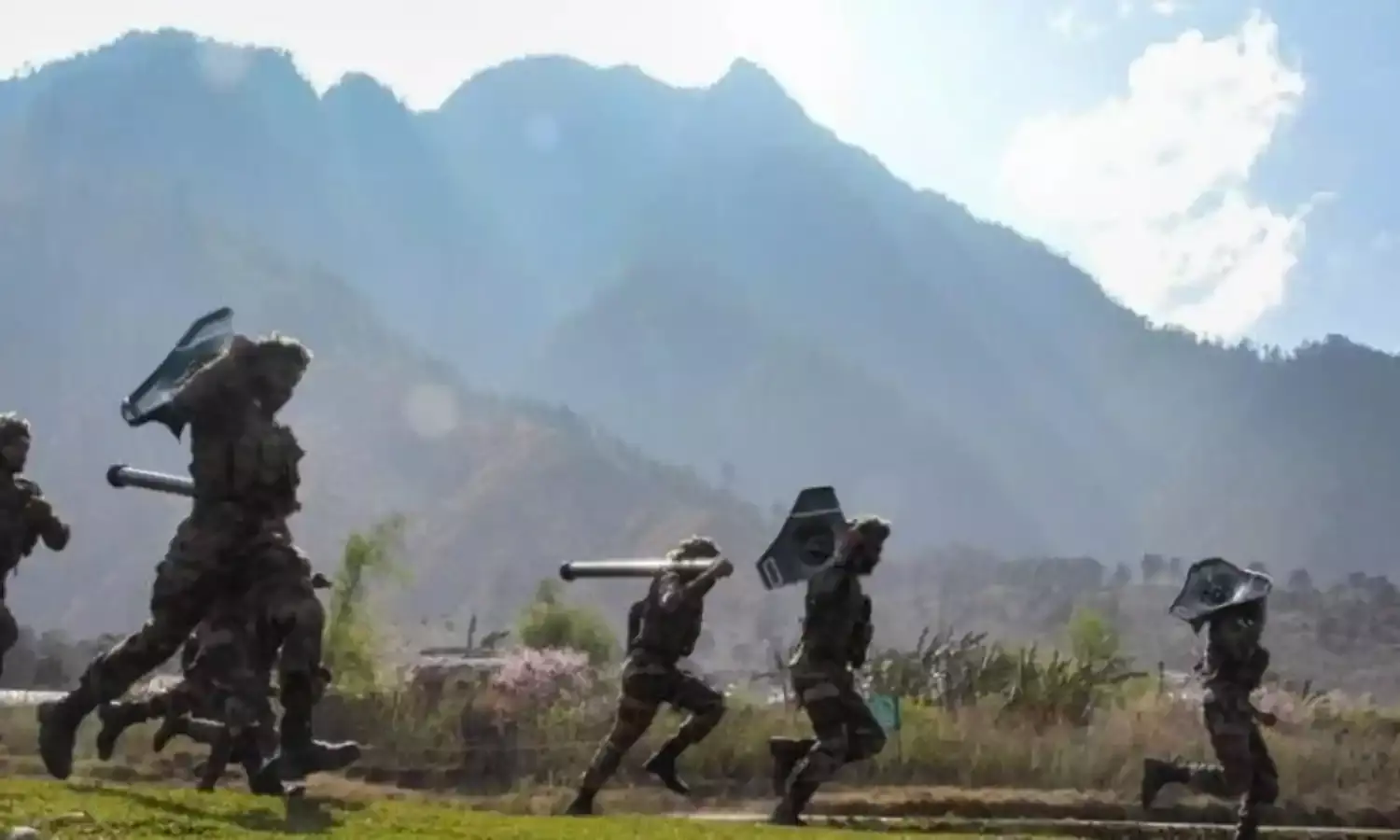PM's 'No Risk, No Biscuit' Policy
Reluctance to call China out

Four months into the Chinese annexation of Indian territory in eastern Ladakh, specifically in the Galwan Valley, the Hot Springs-Gogra-Kugrang area, and in the stretch of the northern shore of the Pangong Lake from Fingers 3 to 8, the BJP government is unwilling to call China out.
Its case is that while the PLA intrusions and build-up are in the ‘dead zone’ 2kms on either side of the Line of Actual Control — meaning in the 4km belt astride it, there otherwise is no hint of Chinese aggression!
This in the face of overwhelming evidence that the PLA has indeed gobbled up Indian land and will not stir out of it for any reason. If the government hopes that it will be able to leverage the “preemptive” occupation of Black Top and other peaks by the Indian army in the Kailash Range south and southeastwards of the Pangong, around the Spanggur Gap, to get the PLA out of where it has encroached and is now consolidating its presence, then it has misread China’s intentions terribly enough to render Indian diplomacy it is banking on, futile.
Not that it has prevented foreign minister S Jaishankar from doing the obligatory rounds of Moscow, etc. and hoping to realize by these means the restoration of the status quo ante.
In this reality denial mode, the ruling party in Parliament stuffed the opposition, daring it to not support the motion of support for the armed forces in this their time of trial. The positive vote was then construed as a general backing for government policy. Neat!
Except this policy teeters between doing nothing to reverse the Chinese capture of Indian territory and approving military actions, such as taking Black Top, etc., that while disadvantaging PLA forces some in that sub-sector, did not in its execution entail great risk of things going wrong.
On the basis of what the Indian army has done and not done in Ladakh so far, several worrisome aspects of Prime Minister’s approach driving Indian policy are becoming clear. Modi definitely does not want more Indian casualties. Containing the public ire after the gruesome killing by the PLA troops of the 16 Bihar Regiment personnel June 15 was touch and go, and resisting the people’s desire for just retribution a delicate political operation the Modi regime barely pulled off.
The lesson learned was that the best way of avoiding Indian deaths on the LAC is to avoid hostilities as much as possible. Nor is Modi in a mood to countenance military escalation for any reason. This rules out any action by the army to force the Chinese out of areas on the Indian side of LAC they are presently entrenched in.
The August 29 Black Top action, in the event, was a perfect symbolic act showing a strong Indian army that far from taking guff from the PLA was taking the fight to the Chinese. Except it involved little real risk to Indian troops, as it was “preemptive” action. It was sort of the Ladakhi version of the Balakot strike on the other front. There was less physical harm done the adversary than that the operation suggested a dynamic Indian response and salved India’s ego.
Escalation has been avoided also by studiously ignoring the inconvenient fact of PLA’s territorial aggrandizement by rhetorically beating around every bush but that one. Modi has thus at once legitimated the Chinese moves and absorption of Indian territory into the ‘Tibet Autonomous Region’, incentivized President Xi Jinping to stop the PLA from grabbing more Indian territory than it had perhaps planned to do but far more land than Modi wants to lug around as political liability.
This has led to a counter Indian military build-up but one that seems designed for the army to stay put, weather the winter, rather than fight the PLA. It serves Modi’s aim of capping the military confrontation at the existing level of to-ing and fro-ing.
This is the logic of Modi’s “no casualties and no military escalation, at all cost”-approach, his brave sounding words during his day-trip to Nimu with references to the sudarshan chakra wielding Lord Krishna notwithstanding. After all, when the Modi regime, indirectly claims in Parliament that there’s no sign of Chinese aggression anywhere, nothing that cannot be explained by the indistinctness of the LAC on the ground, there’s no reason for Beijing to either disagree or, importantly, be disagreeable.
Happily, this policy conforms to the Indian armed services’ mindset of not provoking the PLA, not taking ‘pangas’ with the Chinese. And it is in line with the country’s traditionally defensive-passive-reactive military posture where China is concerned.
Except, Modi’s over-cautious policy is the reverse of “no risk it, no biscuit” — a phrase a famous American football coach mouthed to urge his team to show initiative and aggro on the field. Transposed to the Sino-Indian confrontation, it means just the opposite — do less, do nothing, so less harm comes to you, with the ‘biscuit’ going to the PLA and Indian territory being lost permanently to China.
This includes the loss of access to all the patrolling points and land northwestwards of the Y-junction on the Depsang Plains and will lead to the DSDBO Highway becoming vulnerable to a Chinese pincer closing in from the Galwan and the Depsang endangering, in the process, India’s access to the Siachen Glacier and, incidentally, negate any Indian plans for striking at the Sino-Pakistani joint at the Karakorum Pass. This last objective is what the PLA had uppermost in mind strategically to achieve and, thanks to Prime Minister Modi, it has now done it.
Bharat Karnad is a senior defence and strategic analyst.



